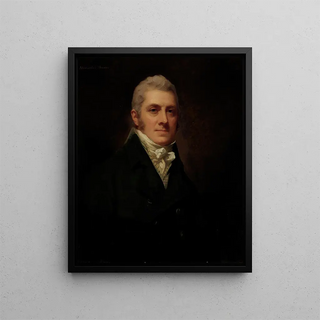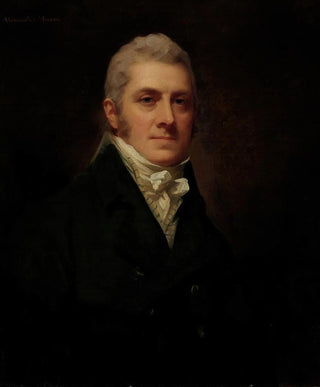Art print | Portrait of Sir Alexander Munro - Sir Henry Raeburn


View from behind

Frame (optional)
Sir Henry Raeburn’s "Art print of Sir Alexander Munro" is an iconic piece that transcends the simple frame of a painting to become a true window into the soul of a man and an era. Painted in the early 19th century, this work not only showcases Raeburn’s undeniable talent but also his skill in capturing the personality of his subjects. Sir Alexander Munro, a distinguished physician and anatomist, is depicted with such precision and depth that the viewer cannot help but feel an intimate connection with the character. The soft light illuminating his face, the meticulous details of his attire, and the thoughtful expression animating his face make this portrait a centerpiece of Scottish neoclassicism.
Style and uniqueness of the work
Raeburn’s style is distinguished by his ability to blend realism and idealization. In the "Art print of Sir Alexander Munro," each brushstroke seems imbued with intention; every shadow and highlight is carefully orchestrated to bring the canvas to life. The artist uses a palette of warm colors that lends an inviting and solemn atmosphere to the composition. Munro’s slightly tilted posture suggests an attitude that is both open and introspective, allowing the viewer to enter his inner world. Raeburn excels in depicting textures, whether it’s the softness of Munro’s face or the richness of his clothing fabrics. This portrait does not merely depict a man; it tells a story— that of an intellectual of his time, engaged in the pursuit of knowledge and progress.
The artist and his influence
Sir Henry Raeburn, a prominent figure in Scottish painting, marked his era with an innovative approach to portraiture. Born in 1756, he established himself as one of the most influential artists of his time, notably through his ability to capture the essence of his contemporaries. His technique, which combines realism and sensitivity, has inspired many artists after him. Raeburn also played a key role in developing Scottish artistic identity, blending tradition and modernity.

Matte finish

View from behind

Frame (optional)
Sir Henry Raeburn’s "Art print of Sir Alexander Munro" is an iconic piece that transcends the simple frame of a painting to become a true window into the soul of a man and an era. Painted in the early 19th century, this work not only showcases Raeburn’s undeniable talent but also his skill in capturing the personality of his subjects. Sir Alexander Munro, a distinguished physician and anatomist, is depicted with such precision and depth that the viewer cannot help but feel an intimate connection with the character. The soft light illuminating his face, the meticulous details of his attire, and the thoughtful expression animating his face make this portrait a centerpiece of Scottish neoclassicism.
Style and uniqueness of the work
Raeburn’s style is distinguished by his ability to blend realism and idealization. In the "Art print of Sir Alexander Munro," each brushstroke seems imbued with intention; every shadow and highlight is carefully orchestrated to bring the canvas to life. The artist uses a palette of warm colors that lends an inviting and solemn atmosphere to the composition. Munro’s slightly tilted posture suggests an attitude that is both open and introspective, allowing the viewer to enter his inner world. Raeburn excels in depicting textures, whether it’s the softness of Munro’s face or the richness of his clothing fabrics. This portrait does not merely depict a man; it tells a story— that of an intellectual of his time, engaged in the pursuit of knowledge and progress.
The artist and his influence
Sir Henry Raeburn, a prominent figure in Scottish painting, marked his era with an innovative approach to portraiture. Born in 1756, he established himself as one of the most influential artists of his time, notably through his ability to capture the essence of his contemporaries. His technique, which combines realism and sensitivity, has inspired many artists after him. Raeburn also played a key role in developing Scottish artistic identity, blending tradition and modernity.






